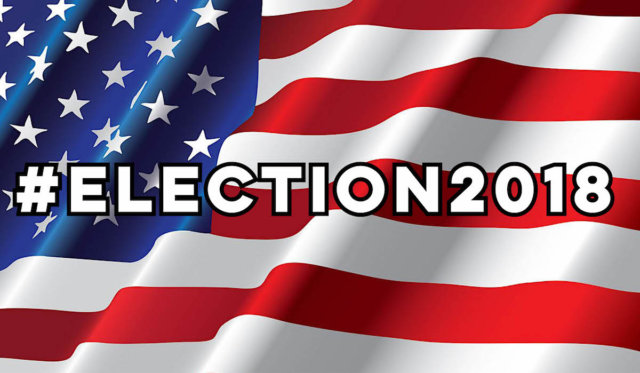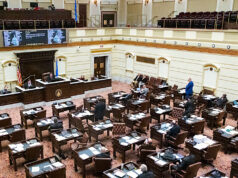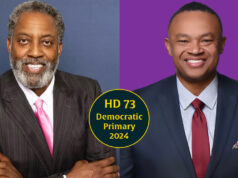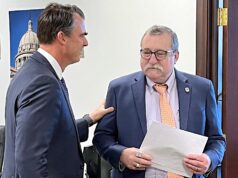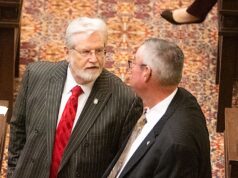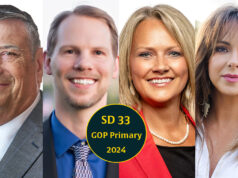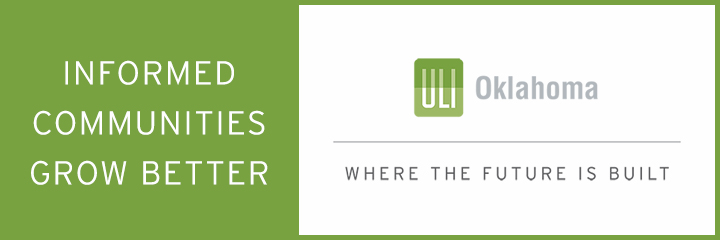
As a nation, Americans have been talking about 2018 since 2016. Without further ado, it’s here, and it will answer a great deal of the political questions that have been brewing for the past year and a half.
This situation applies to both state and national political scenes, with a November 2018 general election offering the biennial chance to reshape the U.S. Congress.
In Oklahoma, 2018 will mean the election of a new governor, as well as the biennial vote on every citizen’s state representative (assuming multiple candidates file in each of 101 districts, which is actually unlikely).
So instead of spending this first day of January reminiscing about the best, worst and most bizarre moments of 2017, let’s examine what 2018 may hold for state and national politics. While we’re at it, we might as well make a few predictions.
What 2018 could mean for Oklahoma politics
If you’ve followed our coverage over the past two years, you’re aware that the public is dissatisfied with its political leaders. If you need further explanation of how and why, you can find our stories about the Oklahoma Legislature here.
That means a great deal is on the line heading into 2018. Specifically, the Legislature — thanks to a court ruling and then a Gov. Mary Fallin veto — still hasn’t completed the budget it was supposed to balance in May. Lawmakers will be tasked with that sooner than later, and then they will have to pass the FY 2018-2019 budget, too. Efforts to bring in new revenue do not seem to be getting easier, especially in the face of the 2018 election. Still, Fallin believes lawmakers are more likely to lose their seats if they fail to find solutions.
With that as the backdrop for an uncertain 2018 legislative session, let’s make a few predictions about Oklahoma’s 2018 election cycle.
- Mark Aug. 28 on your 2018 calendar if you are a Republican in Oklahoma. Barring a slew of sex, drugs and rock and roll scandals, it will be nearly impossible for any GOP gubernatorial candidate to pull 50.1 percent of the vote during the crowded June 26 primary, so a runoff between the top two Republicans is a near lock.
- Prepare for new faces in your 2018 legislative elections. Not only will a high percentage of legislative races feature primary battles, but political fervor over Oklahoma’s dysfunctional governance will likely allow Democrats to field candidates in even the strongest Republican districts and vice versa. Remember, in 2014, 50 of 101 Oklahoma House seats did not feature a general election. (And people wonder how so many legislators began wearing Complacency as their scented toilet water of choice.) But several seats will be open contests owing to term limits, with additional lawmakers pondering whether to walk away on their own terms like a few colleagues already have.
- When Nov. 6, 2018, finally rolls around and you head out to vote for Oklahoma’s next governor, take your reading glasses, your pocket state constitution and a snack: The general election ballot is likely to feature another avalanche of State Questions for your consideration. While Gov. Mary Fallin might place medical marijuana on the June 26 primary ballot to keep from potentially boosting Democrats in November, several other items could be there: Marsy’s Law, raising gross production taxes to 7 percent, modification to the state’s unique optometric laws, changes to legislative redistricting, and a decrease in the legislative threshold for tax increases. (Who knows what other issues will be jammed onto the ballot by the Legislature, too. At some point, they might give up on seeking 76 votes in the House and just place the cigarette tax on the November ballot for the people to decide.)
What 2018 could mean for U.S. politics
When Donald Trump was elected president in November 2016, political experts knew 2017 and 2018 would be the best opportunities for sweeping legislative accomplishments under a President Trump.
At the end of 2017, a major — and controversial — tax reform package is the only substantial policy accomplishment on which Republicans can hang their hats… so far. In 2018, Trump is likely to push a major infrastructure package, which should find bipartisan support unless it gets tied in with the politics of a border wall or some other controversial effort.
Regardless of whether such a plan passes, here are three predictions for 2018’s national political stage:
- Politicians will begin running for president… two years early. Much like Christmas creep has invaded Halloween, so will the 2020 presidential election affect 2018. It has already begun on the Democratic side of things, and another 12 months of rage-tweets from the president could convince someone to challenge Trump from the right as well.
- Democrats will be celebrating in November 2018. When President Barack Obama led his party to the first mid-term election of his presidency in 2010, a Republican wave swept across the nation and into the halls of Congress. With President Donald Trump’s approval rating in the proverbial crapper, expect Democrats to approach election day with a chance — but no sure lock — of retaking both chambers.
- Cable TV news networks will give more air time to Kid Rock than any other congressional candidate. He’s a cowboy, baby, and the talking heads will not be able to keep their hands off.
Owing to all of these factors and possibilities, we will be talking about 2018 a great deal. Here’s hoping you follow along.









